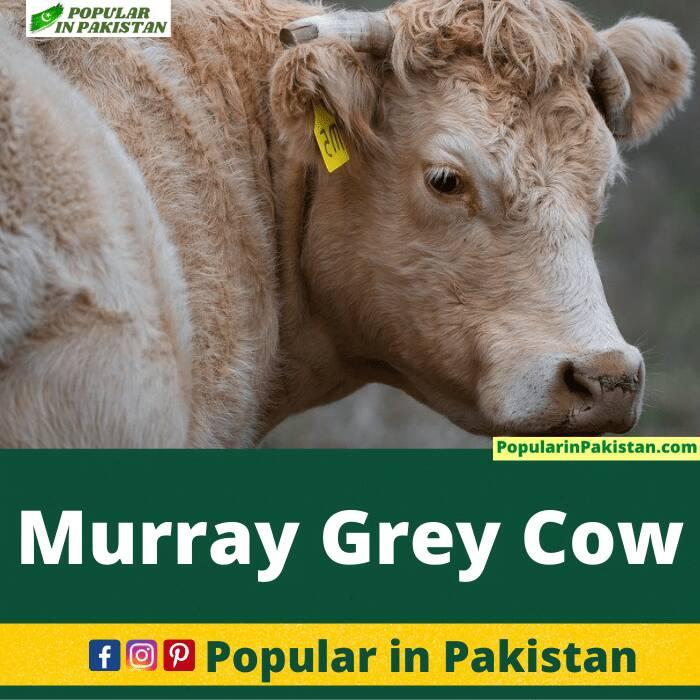It has long been known that buffaloes are bred for milk and meat production in northwest India. I will introduce the Murray Cow today. There is no better-known buffalo breed than the Murray. This buffalo breed is a water breed known scientifically as Bubalus Bubalis. Murray was used in dairy products for decades.
Its origin is Haryana (an Indian state) but it is commonly available in Punjab and West UP of India. Among all buffalo breeds in India, it produces high-butterfat milk, making it one of the most efficient milk producers. Murray Cow’s curved horns also distinguish it. This article sums up everything about Murray Cows, such as their history, origin, features, characteristics, types, and milk production. Let’s meet the Murray Buffaloes.
Origin & History of Murray Cow
Milk and meat are produced primarily by Murray Cows in India. Murray cows are also known as Delhi, Kundi, or Kali. In India, it can be found in Bhiwani, Hisar, Rohtak, Jind, Jhajjar, Fatehabad, Gurgaon, and Delhi. Additionally, there are 20,00,000 Murray populations in Punjab’s Nabha and Patiala districts, and in the Sutlej valley, Ravi, and north Sindh.
The breed has formed a major part of many developing countries’ livestock industries, as well as being used in grading non-descript buffalo. Haryana’s government launched an incentive cash prize program to encourage farmers to export Murray cows.
Murray buffalo can now be found in many countries on Earth, including Sri Lanka, Vietnam, the Philippines, China, Malaysia, Nepal, Brazil, Ecuador, and Azerbaijan. This is for milk production. Bulgaria, Egypt, and Italy have also used this technology for meat production, and Brazil has used it both for meat and milk production.
Physical Characteristics of Murray Cow
Murray buffaloes have beautiful appearances. Its color is dark black and often has white marks on the face and legs. Despite being standard, white markings on the face and extremities do not suit the Murray breed.
Their horns are curved and short. Males have shrunken eyes, while female eyes are active and prominent. Their faces are short, alert and thin. Murray buffalo cows have a very deep, massive body, while its head and neck are relatively light. Their udder is well developed, and their long tail reaches the fetlock.

Head
Bulls have large, coarse heads, whereas females have small, clean-cut heads. The forehead is broad and prominent. Despite the short nose and wide nostrils, the face looks fine without white spots. Typically, the horns are short and spiral inward with a backward and upward movement. They are flat when cut, and shaped upward and backward.
Body and Limbs
Murray females have long, thin necks while males have thick, massive necks. Dewlap and a hump are absent. The brisket is broad and well-developed across the chest. They have black hooves and short, straight legs.
As a result, the female body has a wedge-shaped front portion while the male body has a light front portion and a heavy rear portion, giving women an unusual appearance. Toward the front, the back slopes, tapers, and has well-rounded ribs. Coverage over the hips is broad and smooth. Males have a broad, slightly sloping ramp that is more prominent than females.
Females have large, curved twists in the thigh and buttocks, which provide ample room under the udder. Males have strong, nearly straight hocks, but females have bent hocks. The tail is long, thin, and flexible. To an extent of 25 to 30 centimeters, the tail is free of vertebrae.
Udder
A very well-developed, zig-zag milk vein can be seen in the udder, and the hind legs carry the udder forward and backward effectively. It is common to have longer hind teats than fore teats, as well as widely spaced teats. Murray buffaloes can also endure drought. Asian tractor is another name.
Colors
A murrah called Kandi and Kali is known for its dark black color. Its skin is thin, soft, and smooth with scant hair.
Horns
This breed of buffalo is highly distinctive; short, tight, spiraling back and forth, then twisting inward. They have short, tight-curled horns. Spiral curves increase when horns loosen.
Size
Weight & size can be described as follows; generally speaking, male Murray buffalo weigh 440-800 Kg, while female breeds weigh 350-700 Kg. Murrah cows’ bodies are longer, have heavier bones, and are considered bulky and massive animals.
Mature bulls are around 142 cm at withers, while cows are around 133 cm. Murrah buffalo reach maturity weighing around 750 kg for bulls and 650 kg for cows.
Diet
Traditionally, buffaloes are kept with their calves in domestic environments. They are hand-milked twice a day. Murray Cows are fed roughage (straw, corn stalks, sugar and cane residues). In addition, they graze throughout the day if grazing is available. Natural mating occurs, but artificial insemination is also available in some regions.
Murray livestock feed is approximately 20-30 Kg green fodder, 8-12 Kg dry fodder (paddy, straw), 4-8 Kg concentrate feed, 50-100 gm mineral mixture & 30-40Lt water. Breed, habitat, herd size, pregnancy, or the size of the herd can influence feed and fodder requirements.
Read More: CATTLE FARMING IN PAKISTAN
Habitat Adaptability & Disease Resistance
The Murray Buffalo has a higher milk yield and more environmental resistance than pure buffaloes. There is resistance to diseases and easy adaptability to the south Indian climate within Murray buffaloes. Although the breed is moderately tolerant of temperatures, it can adapt to locations with a warmer or colder climate in some weeks.
Types of Murray Buffalo
Murray buffaloes include the Pure Murrah cow and the Graded Murrah cow.
Pure Murray cow
Pure Murray buffalo are those with pure genetic lineage. They have not been crossed with other breeds.
Graded Murray
Graded Murray is a cross between pure murrahs and local breeds. Graded Murray has more natural climatic and disease adaptations since the breed inherited these characteristics from local domesticated cattle. Yet, they will not produce as much milk as purebreds. Graded Murrah sell for less than pure ones.
Life & reproduction
Murray buffalo live for twelve years. Milk production peaks at the fourth lactation and drops with each subsequent lactation. Its gestation period is 310 days and the dry period is 90 days.
A first calf reaches maturity approximately 3 years after birth. Calves are 45-50 months in villages, but 36-40 months in high-quality herds. It usually takes between 400 and 500 days between calvings.
Milk yield
Murray buffalo is also known as Black Gold in India because of its high milk production. Breed-specific averages range from 1500 Kg per lactation to 2200 Kg per lactation while fat content ranges from 6.9 to 8.3 percent. Murrah’s milk falls under milk category A2.
Murray cows produce more than 18 liters per day. The All India Milk Yield Competition held by the Government of India recorded a maximum milk yield of 31.5 kg per day from a graded Murrah buffalo. At the 2016 National Livestock Competition in Punjab, the highest milk yield recorded for a Murrah buffalo was almost 27kg.
Across India, Pakistan Egypt & Italy, pure Murray is crossed with local buffalo to create Graded Murrah.
Beef production
It is primarily a dairy breed and bred for milk production. Yet, some countries also use it for meat production, including Egypt, Bulgaria, Brazil, and Italy.
Price point
Prices of Murray vary depending on factors such as the size and structure of the Murray, milk yield per day, buffalo hereditary status, lactation cycle, etc.
Currently, it’s a high-priced dairy breed and is sold domestically and internationally. Murray Buffalo’s price varies between $2000 and $4500 depending on the quality.
Why it’s world widely famous
Since this breed is one of the highest milk and butterfat-producing breeds, it is worldwide famous. It is widely used in all major cities and rural areas in north and west India for milk and ghee production. A study found that buffaloes produce more than half of India’s milk yield, while Murray cows yield 23% of it.
Since Murray buffaloes have a lot of milk production, they are ideal for formal and organized dairy farms. Government-supervised and privately owned farms maintain large Murray buffalo herds.
In an average lactation, individuals yield 3,590 kg with an overall production of 1,793 kg in 305 days. Farmers found a maximum daily yield of 31.5 kg. We also found an average butterfat content of 7 percent, and a typical age at first calving of 39.3 months.
Conclusion
The Murray Grey is a breed of Australian beef cattle that originated in the upper Murray River valley between 1905 and 1917. It is similar in appearance to the Aberdeen Angus, from which it largely derives, but is grey, silver or red in colour. Murray Greys are naturally polled (hornless) and adaptable to most climatic conditions. They are known for their calving and milking ability, gentle temperament, and rapid natural growth. Murray Greys have been exported to New Zealand, Canada, the United States, the United Kingdom, China, and Japan.

